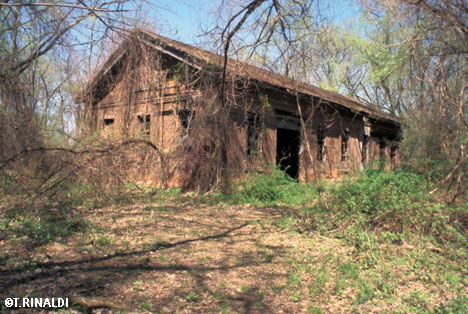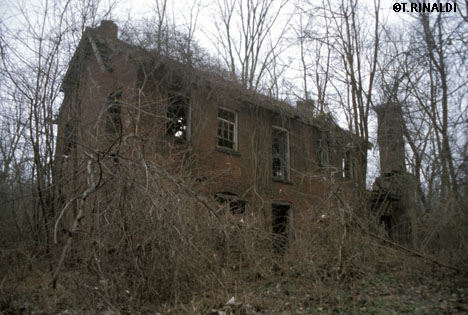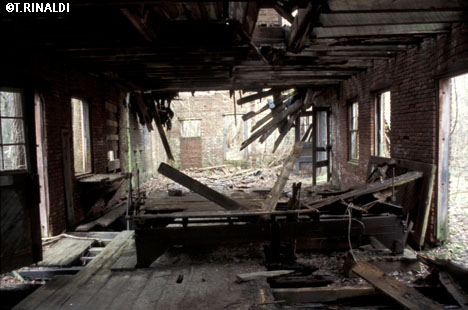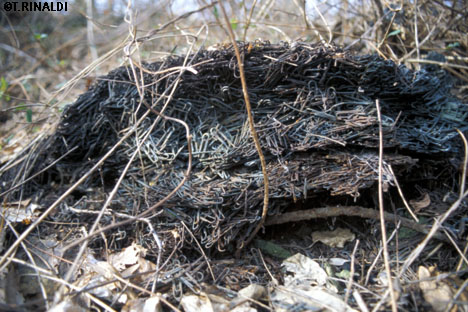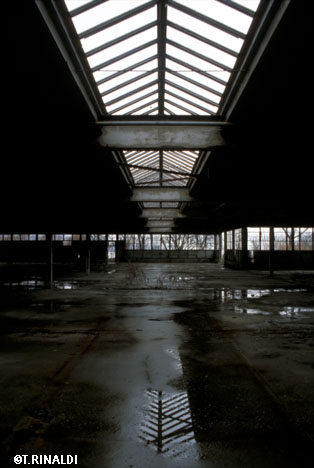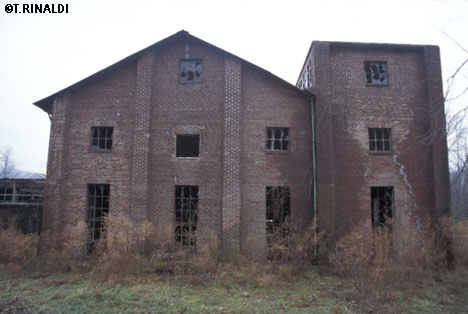DENNINGS POINT - B E A C O N - NOT MANY PEOPLE alive today can remember the time when the Hudson Valley was arguably the most important center of brick making in the world. In 1910, more than 130 brickyards operated on the river between New York and Albany. The number declined steadily thereafter, until the last Hudson River brickyard (the Powell and Minnock plant near Albany) shut down in 2002. Remarkably there is very little left of the yards themselves, and the ruins of the Dennings Point Brick Works at Beacon are among just a small handful of Hudson River brickyard structures that survive in the 21st century.
DENNINGS POINT hooks out into the river just below the city of Beacon. Its unusually complex history has been chronicled in a great book by Jim Heron entitled "Dennings Point: A Hudson River History." Archeological evidence suggests that the point was inhabited as early as 4000 B.C. More recently, Washington traversed it during the American Revolultion. Alexander Hamilton penned the first of the Federalist Papers while visiting an estate that existed here through much of the 19th century.
THE NEWBURGH industrialist Homer Ramsdell established the Dennings Point Brick Works around 1885. The yard supplied bricks for high profile projects including the Empire State Building and Rockefeller Center. The brickyard operated until 1939, when it literally ran out of clay and was abandoned. Such was the fate of many Hudson River brickyards by then. Carl Carmer's book "The Hudson," published that same year, noted that many survived only in ruins, "their chimneys standing lonely beside tumbled, weed-grown walls and staring, empty windows."
THE SITE LANGUISHED until 1948, when it was taken over by a manufacturer of composite wood/concrete construction panels called Durisol. Durisol constructed new factory buildings on the point using its own materials, which were also used in the construction of several modernist houses around nearby Cold Spring, and for sound barrier walls lining the New York State Thruway. Durisol later relocated, but a paperclip manufacturer called the Noesting Pin Ticket Company continued to use the point until about 1980. The State of New York acquired the land in 1988 and incorporated it - archeological sites, industrial ruins and all - into the Hudson Highlands State Park. THE BUILDINGS continued to waste away until 2003, when the State of New York selected Dennings Point as the site for a new state- and privately-funded environmental research facility called the Beacon Institute for Rivers and Estuaries. The Institute will be housed in the site's mélange of ex-industrial buildings, thus preserving some of the last extant reminders of the Hudson River brick industry. Following on the heels of Dia:Beacon's successful conversion of a former box printing factory into a world class art museum, this project is yet another example of how long-neglected buildings can be reused for the benefit of the communities around them. Where industry once exploited its resources for profit, Dennings Point has now come full circle, as a place of study for environmental protection and conservation - and a successful model for historic preservation to boot. © T.E. Rinaldi, 2006
|
